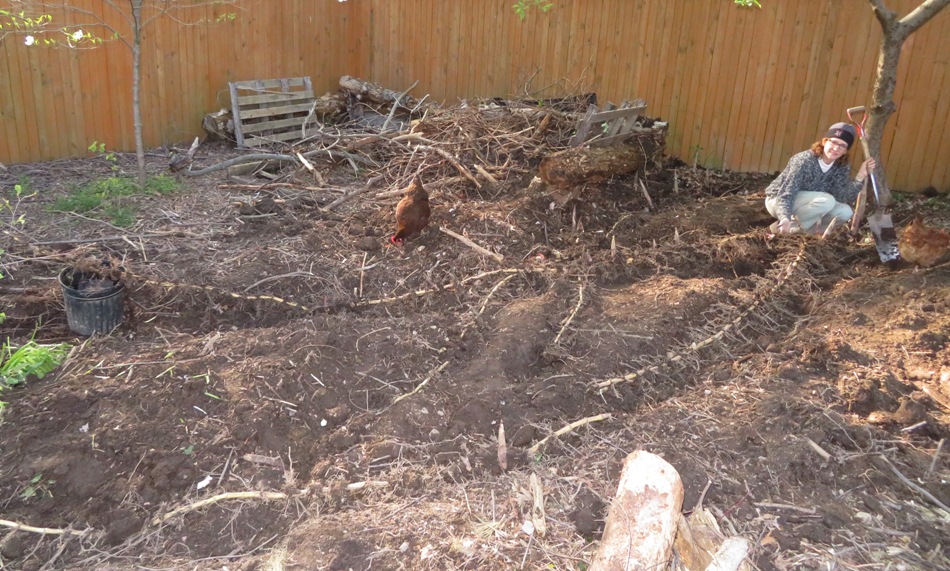Bamboo was the enemy. But before you destroy your enemy, you need to first understand it. Norma and I did a lot of reading on-line to learn how bamboo spreads.
wikiHow - How to Control the Spread of Bamboo
Bamboo Plants HQ - How to Stop Bamboo From Spreading?
Bamboo Garden
I wanted to leave herbicides as a last resort because we have chickens that eat plants. In general, we want to keep our backyard as poison-free as possible.
Next, I started digging...not to remove the problem, but to determine the extent of spread.
There were about 6-10 rhizomes in our yard. The longest spread 23.5 feet south from our north side fence. Each rhizome produced several shoots, generally every 6-24 inches. I could generally trace the rhizome path by looking for the shoots. But not all shoots are visible. The small ones may not have broken through the ground. In one of my finds, there was a rhizome that spread 5.5 feet beyond the last shoot.
In general, the rhizomes are easy to remove. They were typically between three to nine inches below the surface. In one case, it was extremely difficult to remove because it had grown between the roots of our cherry tree, but in general, I could dig them up easily. Or, if the ground was soft, I could simply pull them up. In the below photo, I am holding rhizomes and shoots that I dug up.
Here, you can see how they ran east, towards the morning sun and parallel to our fence.
Norma dug up a section that ran south.
1 / 2


Norma and chix.
2 / 2


Norma with rhizomes.
❮
❯
What do the rhizomes look like? Ours are segmented with roots coming from each segment. Sometimes they are fibrous and have an orangey exterior.
Often, they are a half to one inch in diameter. Here's what they look like if you cut one open.
It was pretty rare for a rhizome to bifurcate but it did occur a few times. So if you pull them up, just make sure you don't break one at a junction and leave some behind.
What about the shoots? I sometimes call them "spikes." These are the things to look for. They grow out of the rhizomes. This is what they normally look like.
You can peel the leaves off the exterior as if they are corn.
Your fingernails can easily pierce the soft parts under the leaves. I know that people in Asia eat bamboo shoots but I don't know what kind they eat or how they prepare it. But I do know my chickens found the shoots tasty, especially if I broke it open to expose the fleshy white part.
I found an article titled
BBC News - Coronavirus lockdown: Asian cooks make bamboo shoots top trend which I might refer to later if I want to harvest the shoots for food.
I removed the shoots, rhizomes, and all traces of bamboo in my yard. I disposed of them in compostable bags to be picked up by the county.

